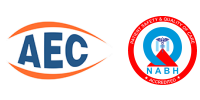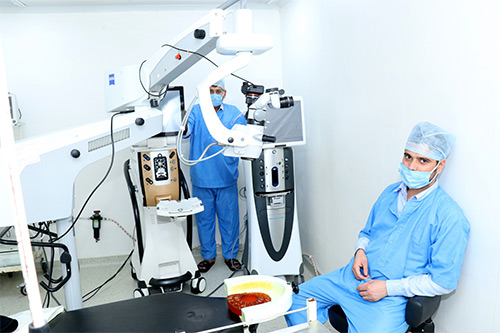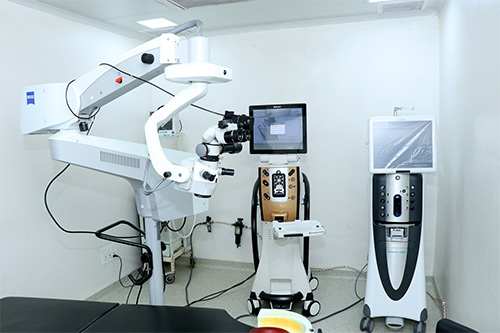What is a Squint?
A Squint, or strabismus, is a medical condition in which the eyes do not align properly—they do not look in the same direction at the same time. The disorder occurs due to poor eye muscle control. Other reasons include an improper balance of eye muscles, faulty nerve signals to the eye muscles, and focusing faults (usually long sight). Due to these complications, the eyeballs may converge or diverge, thus obstructing proper functioning of the eye. The disorder can affect individuals at any age, whether adult or baby.
Squint Surgery in Karnal is an effective treatment option for those suffering from this condition. With modern technology and expert care, Squint Surgery in Karnal helps realign the eyes to restore clear, coordinated vision and improve both functionality and appearance.

Common Symptoms That Require Attention
- Eyes that look at different directions at the same time
- Eyes that don’t move together
- Squinting or closing one eye in bright sunlight
- Poor peripheral vision
- Poor depth perception

What Causes Squint Eye?
Squint eye is caused due to nerve damage or problems in the eye muscles. When some muscles around the eye are weaker than others, they are unable to work together. As a result, one eye looks at one object, while the other eye turns in a different direction and looks at another object. The brain receives two different signals, one from each eye, and the message from the weaker eye is ignored. While a squint eye is usually present at birth, it can even develop later in life due to general health conditions or eye injuries.
For those affected, Squint Surgery in Karnal offers an effective solution to realign the eyes and restore binocular vision. With advancements in medical care, Squint Surgery in Karnal is now performed with precision and high success rates, helping patients improve both vision and appearance.
What are the different types of Squints?
- Esotropia – When the eye is turned towards the nose, it is referred to as an esotropia.
- Exotropia – When the eye turns outwards, it is called an exotropia.
- Hypertropia – When the eye is turned upwards, it is called hypertropia.
- Hypotropia – When the eye turns downwards, it is called hypotropia.
Squint Eye Treatment
- Glasses: In cases where underlying problems with vision are the cause of squint eye, glasses are your best option.
- Eye-patch: An eye patch is often used to correct a squint eye. Wearing it on the good eye can help ensure that the squint eye works better.
- Eye Exercises: Although exercises should not be considered as a substitute for medical treatment, there are many exercises that are often part of a squint eye correction treatment. Two common eye exercises include Pencil Pushups and Barrel Card.
- Pencil Pushups: Pencil pus ups are simple ocular workouts that make both the eyes focus on the same point. Hold a pencil at arm’s length and focus your gaze on it. Slowly move the pencil towards you, without losing focus as long as you can.
- Barrel Card: Draw three red barrels of progressive size on one side of a card. Do the same thing in green on the other side. Hold the card vertically against your nose, so that the largest barrel is the furthest away. Stare at the far barrel until it becomes a single image with both the colours and the other two barrel images have doubled. Maintain your focus for about five seconds. Then repeat with the middle and the smallest barrel images.
- Surgery: When none of the above treatment methods work, surgery is the last resort. A squint eye surgery can realign the eyes and restore binocular vision.






